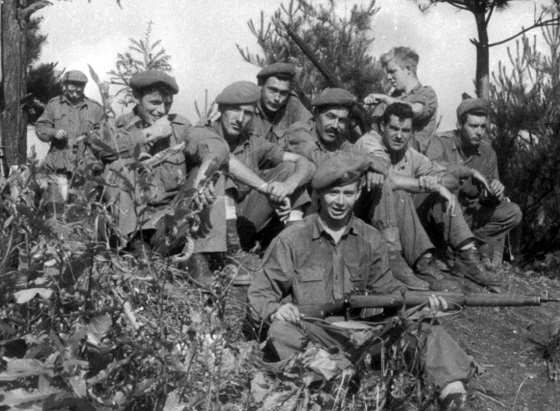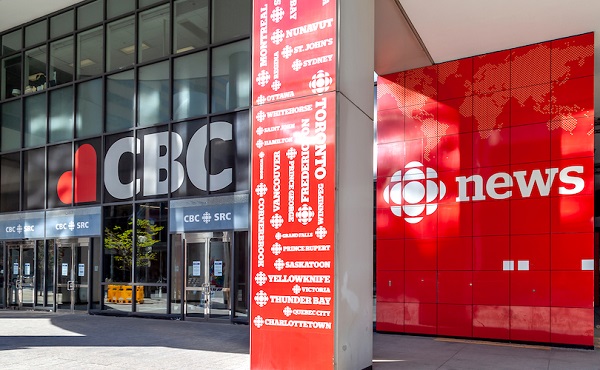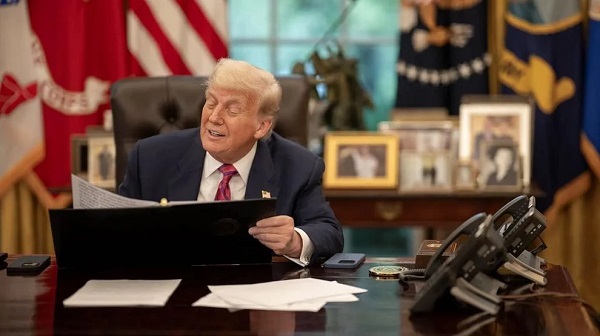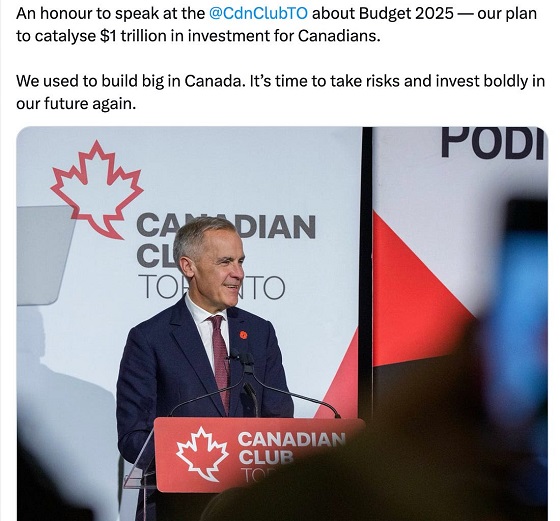Brownstone Institute
The Amateur Who Unraveled Wuhan

From the Brownstone Institute
BY
Tye’s unique perspective on China’s restrictive policies intensified his curiosity about the pandemic’s origins in early 2020. Amidst rampant speculation, his fluency in Chinese, and a decade of cultural immersion enabled him to explore overlooked open-source data, distinguishing him from those content with merely accepting information as presented.
Matthew Tye, an independent documentarian with a chronicled decade of living in (and motorcycling throughout) China, developed a profound understanding of its culture and language. In March 2020, Tye emerged as a singular figure in the scrutiny of the origins of the Covid-19 virus, using primary sources such as job postings and communications between Chinese researchers – putting to shame a New York Times reporter’s top-down approach of channeling Dr. Fauci (who himself may have been channeling CCP agitprop).
Yet despite Tye’s intricate and subtle discoveries linking the Wuhan Institute of Virology to the outbreak, his word didn’t travel much further than his own YouTube channel – along with one National Review article that similarly did not reverberate beyond its own innate viewership. This scenario underscores a poignant irony: in a digital age where (mis)information can circulate the globe instantaneously, platforms that could have amplified truth – Google, Facebook, Twitter – and the CDC – became custodians of silence, diverting public gaze from the “inconvenient truths” of China’s duplicity and the American deep state’s complicity – during the pandemic’s early days.
Before the pandemic reshaped global narratives, Tye was known for his engaging videos that captured the essence of living in China. He shared insights ranging from cultural explorations like Mahjong and the perceptions of tattoos in Chinese society, to more profound observations about the places where Chinese millionaires aspire to live in the US, and even a quest for China’s rumored “white people.” His documentaries and motorcycle journeys through China’s most remote and fascinating locales revealed China through an unfiltered lens.
Tye, deeply integrated into life in China through marriage and fatherhood, found himself compelled to leave the country in haste in 2018. This decision came after a chilling revelation: the public security bureau in Huizhou was circulating his photo, making him a target – due to his involvement in drone photography, albeit through Chinese contractors.
Relocating to California, Tye’s unique perspective on China’s restrictive policies intensified his curiosity about the pandemic’s origins in early 2020. Amidst rampant speculation, his fluency in Chinese, and a decade of cultural immersion enabled him to explore overlooked open-source data, distinguishing him from those content with merely accepting information as presented.
Tye’s scrutiny of China’s coronavirus response, detailed in his January 2020 critique “China Doesn’t Have This Under Control,” stemmed from skepticism of China’s motives and practices after long personal experience with both. Tye highlighted the country’s counterfeit N95 masks, censorship, hasty (and shoddy) construction of instant hospitals, hypocritical approach to travel restrictions; locking down its own cities while exporting the infected to Europe. Tye was unflinching in his analysis.
In a climate where the Chinese government was vigorously attempting to deflect inquiries into the virus’ origins, suggesting Italy, Russia, or elsewhere, Tye focused on the “metadata” resting only slightly below the surface, accessible to the curious, e.g. the enigmatic disappearance of 21 million cellphone subscriptions in China’s coinciding with the onset of strict lockdown measures; and discrepancies in Covid-19 statistics between China and open societies.
In late March 2020, he delved into the Wuhan Institute of Virology’s online presence, where he uncovered job postings and discussions from November 2019 that hinted at research on bat coronaviruses with potential human transmission. His most startling discovery in April 1, 2020’s “I Found The Source of the Coronavirus” involved a researcher who vanished from public view, with only opaque reassurances from the institute regarding her well-being. These findings were significant not just for their content but for the method of discovery; Tye relied on straightforward internet searches, bypassing the layers of censorship and obfuscation that can hinder such inquiries to China itself.
National Review’s Jim Geraghty did a thorough appraisal (April 3, 2020) of (the improbable) Matthew Tye’s groundbreaking findings:
“It is understandable that many would be wary of the notion that the origin of the coronavirus could be discovered by some documentary filmmaker who used to live in China [yet] a great deal of the information that he presents, obtained from public records posted on the Internet, checks out.”
“On December 24, 2019, the Wuhan Institute of Virology posted a second job posting, “long-term research on the pathogenic biology of bats carrying important viruses has confirmed the origin of bats of major new human and livestock infectious diseases such as SARS and SADS, and a large number of new bat and rodent new viruses have been discovered and identified.— which Tye contends meant, “we’ve discovered a new and terrible virus, and would like to recruit people to come deal with it.””
“He also contends that “news didn’t come out about coronavirus until ages after…doctors in Wuhan knew that they were dealing with a cluster of pneumonia cases…(The Chinese government waited three weeks before it) notified the World Health Organization of a “mystery pneumonia”.””
Moreover, Mr. Geraghty notes, “Scientific American verifies much of the information Tye mentions about Shi Zhengli, the Chinese virologist nicknamed “Bat Woman.”“
Despite the impactful nature of his findings, Tye’s work attracted zero “mainstream media” recognition.

The New York Times, CNN, BBC, and the Wall Street Journal have never referenced or mentioned his contributions. Jack Dorsey’s Twitter (FBI-collaborative Vichy regime) nominally allowed but likely stifled his scoop’s spread. The largest retweet Tye’s discovery (via NR and Laura Ingraham) got was a mere 2.6K retweets.

Fortunately, Matthew Tye had done a reasonable job of building his channel (founded in 2012) to 1 million subscribers. The smoking gun, “I Found The Source of the Coronavirus” video has 2.4 million views (but still appends a CDC banner, ironically).

His YouTube channel’s residuals represent his sole means of support (along with Patreon). And, boy does he need it! China is very well able to recognize any thorn in its side and retaliate appropriately. There are a number of vloggers’ casting aspersions on his reputation, incessantly scouring his 653 videos for ad hominem shots. China took the direct approach of offering him a stipend to soften his approach. Upon his refusal, the CCP pivoted: as Matthew Tye explains, “The CCP Stopped All Brands From Working With Me,” pressuring “companies not to work with people critical of the communist party of China.”
Paul Wolfowitz and Bill Drexel commented in CNBC July 13, 2021:
“Tye receives a constant barrage of online harassment, most recently in the form of English-language CCP shills attempting to portray him as a white supremacist. But Tye has also encountered CCP censorship within the U.S.: while these same shills have their popularity artificially inflated by bots and wumao (“the 50 Cent Army,” reportedly paid RMB¥0.50 /post), China’s wumao also found ways to demonetize Tye’s videos on YouTube — throttling their view count and revenue.”
Remarkably, the Chinese media have sought to counter his influence by promoting a look-alike American to disseminate pro-China commentary, an effort to muddle perceptions and discredit Tye.

The doppelgänger lacks Tye’s insight and charisma, falling short of China’s past successes in brand mimicry. This misstep isn’t just a failed attempt at replication; it’s emblematic of a deeper irony. Once, China transformed from knockoff king to luxury label owner, turning ‘Made in Italy’ into a lucrative venture: purchasing high-end Italian brands; transplanting 250,000 workers – this irony came full circle when China exported Covid-19 cases direct to Milan. In early 2020, Wuhan residents were prohibited from traveling elsewhere within China, but NOT abroad – a policy that uncaringly transplanted the crisis.
Matthew Tye’s work cuts through the modern trend (both in journalism and intelligence-gathering) of reliance on remote technologies and “chatter” for insights. Tye embodies the essence of investigative journalism: direct, human-centric inquiry. His journey across China, engaging directly with its people and culture, provides a depth of understanding and insight that remote observation cannot replicate. His ability to uncover significant information about the early stages of the Covid-19 pandemic, armed with little more than dedication and direct observation, sets a powerful example for both journalists and intelligence agencies alike. A private military intelligence support group, NSI, did hire him for its speaker series in 2022. This recognition suggests a possible reconsideration of the imbalance between technology-driven and human-centric methods of understanding our world.
Matthew Tye, a modern-day Renaissance man with an insatiable curiosity for knowledge, embodies the spirit of those who discover profound truths not through targeted pursuit but by virtue of their expansive interests and experiences. Like the amateur, Michael Ventris, who deciphered Linear-B, Tye’s journey into the heart of China – fueled by a passion for exploration, whether cruising on his motorcycle, embracing the culture, or building a family – was never aimed at uncovering any secrets, let alone the enormously consequential origin story of a global pandemic.
Yet, it was this very openness and his immersion in what he describes as the “Gray Zone” of 1990s-2000s China – a time of burgeoning commerce and interaction – that ultimately positioned him to discern the shift towards a “Red Zone” of increased paranoia and restriction beginning around 2013, emblematic of the later Chinese government’s approach to Covid-19.
Tye’s departure from China, propelled by the government’s growing suspicion, marks a poignant end to his exploration but also highlights the critical insights gained from a life lived in earnest curiosity. His story not only sheds light on the changing dynamics within China but also on the invaluable contributions of those who navigate the world with open hearts and minds, revealing truths that shape our understanding of global events.
Brownstone Institute
Bizarre Decisions about Nicotine Pouches Lead to the Wrong Products on Shelves

From the Brownstone Institute
A walk through a dozen convenience stores in Montgomery County, Pennsylvania, says a lot about how US nicotine policy actually works. Only about one in eight nicotine-pouch products for sale is legal. The rest are unauthorized—but they’re not all the same. Some are brightly branded, with uncertain ingredients, not approved by any Western regulator, and clearly aimed at impulse buyers. Others—like Sweden’s NOAT—are the opposite: muted, well-made, adult-oriented, and already approved for sale in Europe.
Yet in the United States, NOAT has been told to stop selling. In September 2025, the Food and Drug Administration (FDA) issued the company a warning letter for offering nicotine pouches without marketing authorization. That might make sense if the products were dangerous, but they appear to be among the safest on the market: mild flavors, low nicotine levels, and recyclable paper packaging. In Europe, regulators consider them acceptable. In America, they’re banned. The decision looks, at best, strange—and possibly arbitrary.
What the Market Shows
My October 2025 audit was straightforward. I visited twelve stores and recorded every distinct pouch product visible for sale at the counter. If the item matched one of the twenty ZYN products that the FDA authorized in January, it was counted as legal. Everything else was counted as illegal.
Two of the stores told me they had recently received FDA letters and had already removed most illegal stock. The other ten stores were still dominated by unauthorized products—more than 93 percent of what was on display. Across all twelve locations, about 12 percent of products were legal ZYN, and about 88 percent were not.
The illegal share wasn’t uniform. Many of the unauthorized products were clearly high-nicotine imports with flashy names like Loop, Velo, and Zimo. These products may be fine, but some are probably high in contaminants, and a few often with very high nicotine levels. Others were subdued, plainly meant for adult users. NOAT was a good example of that second group: simple packaging, oat-based filler, restrained flavoring, and branding that makes no effort to look “cool.” It’s the kind of product any regulator serious about harm reduction would welcome.
Enforcement Works
To the FDA’s credit, enforcement does make a difference. The two stores that received official letters quickly pulled their illegal stock. That mirrors the agency’s broader efforts this year: new import alerts to detain unauthorized tobacco products at the border (see also Import Alert 98-06), and hundreds of warning letters to retailers, importers, and distributors.
But effective enforcement can’t solve a supply problem. The list of legal nicotine-pouch products is still extremely short—only a narrow range of ZYN items. Adults who want more variety, or stores that want to meet that demand, inevitably turn to gray-market suppliers. The more limited the legal catalog, the more the illegal market thrives.
Why the NOAT Decision Appears Bizarre
The FDA’s own actions make the situation hard to explain. In January 2025, it authorized twenty ZYN products after finding that they contained far fewer harmful chemicals than cigarettes and could help adult smokers switch. That was progress. But nine months later, the FDA has approved nothing else—while sending a warning letter to NOAT, arguably the least youth-oriented pouch line in the world.
The outcome is bad for legal sellers and public health. ZYN is legal; a handful of clearly risky, high-nicotine imports continue to circulate; and a mild, adult-market brand that meets European safety and labeling rules is banned. Officially, NOAT’s problem is procedural—it lacks a marketing order. But in practical terms, the FDA is punishing the very design choices it claims to value: simplicity, low appeal to minors, and clean ingredients.
This approach also ignores the differences in actual risk. Studies consistently show that nicotine pouches have far fewer toxins than cigarettes and far less variability than many vapes. The biggest pouch concerns are uneven nicotine levels and occasional traces of tobacco-specific nitrosamines, depending on manufacturing quality. The serious contamination issues—heavy metals and inconsistent dosage—belong mostly to disposable vapes, particularly the flood of unregulated imports from China. Treating all “unauthorized” products as equally bad blurs those distinctions and undermines proportional enforcement.
A Better Balance: Enforce Upstream, Widen the Legal Path
My small Montgomery County survey suggests a simple formula for improvement.
First, keep enforcement targeted and focused on suppliers, not just clerks. Warning letters clearly change behavior at the store level, but the biggest impact will come from auditing distributors and importers, and stopping bad shipments before they reach retail shelves.
Second, make compliance easy. A single-page list of authorized nicotine-pouch products—currently the twenty approved ZYN items—should be posted in every store and attached to distributor invoices. Point-of-sale systems can block barcodes for anything not on the list, and retailers could affirm, once a year, that they stock only approved items.
Third, widen the legal lane. The FDA launched a pilot program in September 2025 to speed review of new pouch applications. That program should spell out exactly what evidence is needed—chemical data, toxicology, nicotine release rates, and behavioral studies—and make timely decisions. If products like NOAT meet those standards, they should be authorized quickly. Legal competition among adult-oriented brands will crowd out the sketchy imports far faster than enforcement alone.
The Bottom Line
Enforcement matters, and the data show it works—where it happens. But the legal market is too narrow to protect consumers or encourage innovation. The current regime leaves a few ZYN products as lonely legal islands in a sea of gray-market pouches that range from sensible to reckless.
The FDA’s treatment of NOAT stands out as a case study in inconsistency: a quiet, adult-focused brand approved in Europe yet effectively banned in the US, while flashier and riskier options continue to slip through. That’s not a public-health victory; it’s a missed opportunity.
If the goal is to help adult smokers move to lower-risk products while keeping youth use low, the path forward is clear: enforce smartly, make compliance easy, and give good products a fair shot. Right now, we’re doing the first part well—but failing at the second and third. It’s time to fix that.
Addictions
The War on Commonsense Nicotine Regulation

From the Brownstone Institute
Cigarettes kill nearly half a million Americans each year. Everyone knows it, including the Food and Drug Administration. Yet while the most lethal nicotine product remains on sale in every gas station, the FDA continues to block or delay far safer alternatives.
Nicotine pouches—small, smokeless packets tucked under the lip—deliver nicotine without burning tobacco. They eliminate the tar, carbon monoxide, and carcinogens that make cigarettes so deadly. The logic of harm reduction couldn’t be clearer: if smokers can get nicotine without smoke, millions of lives could be saved.
Sweden has already proven the point. Through widespread use of snus and nicotine pouches, the country has cut daily smoking to about 5 percent, the lowest rate in Europe. Lung-cancer deaths are less than half the continental average. This “Swedish Experience” shows that when adults are given safer options, they switch voluntarily—no prohibition required.
In the United States, however, the FDA’s tobacco division has turned this logic on its head. Since Congress gave it sweeping authority in 2009, the agency has demanded that every new product undergo a Premarket Tobacco Product Application, or PMTA, proving it is “appropriate for the protection of public health.” That sounds reasonable until you see how the process works.
Manufacturers must spend millions on speculative modeling about how their products might affect every segment of society—smokers, nonsmokers, youth, and future generations—before they can even reach the market. Unsurprisingly, almost all PMTAs have been denied or shelved. Reduced-risk products sit in limbo while Marlboros and Newports remain untouched.
Only this January did the agency relent slightly, authorizing 20 ZYN nicotine-pouch products made by Swedish Match, now owned by Philip Morris. The FDA admitted the obvious: “The data show that these specific products are appropriate for the protection of public health.” The toxic-chemical levels were far lower than in cigarettes, and adult smokers were more likely to switch than teens were to start.
The decision should have been a turning point. Instead, it exposed the double standard. Other pouch makers—especially smaller firms from Sweden and the US, such as NOAT—remain locked out of the legal market even when their products meet the same technical standards.
The FDA’s inaction has created a black market dominated by unregulated imports, many from China. According to my own research, roughly 85 percent of pouches now sold in convenience stores are technically illegal.
The agency claims that this heavy-handed approach protects kids. But youth pouch use in the US remains very low—about 1.5 percent of high-school students according to the latest National Youth Tobacco Survey—while nearly 30 million American adults still smoke. Denying safer products to millions of addicted adults because a tiny fraction of teens might experiment is the opposite of public-health logic.
There’s a better path. The FDA should base its decisions on science, not fear. If a product dramatically reduces exposure to harmful chemicals, meets strict packaging and marketing standards, and enforces Tobacco 21 age verification, it should be allowed on the market. Population-level effects can be monitored afterward through real-world data on switching and youth use. That’s how drug and vaccine regulation already works.
Sweden’s evidence shows the results of a pragmatic approach: a near-smoke-free society achieved through consumer choice, not coercion. The FDA’s own approval of ZYN proves that such products can meet its legal standard for protecting public health. The next step is consistency—apply the same rules to everyone.
Combustion, not nicotine, is the killer. Until the FDA acts on that simple truth, it will keep protecting the cigarette industry it was supposed to regulate.
-

 Frontier Centre for Public Policy2 days ago
Frontier Centre for Public Policy2 days agoRichmond Mayor Warns Property Owners That The Cowichan Case Puts Their Titles At Risk
-

 Business2 days ago
Business2 days agoSluggish homebuilding will have far-reaching effects on Canada’s economy
-
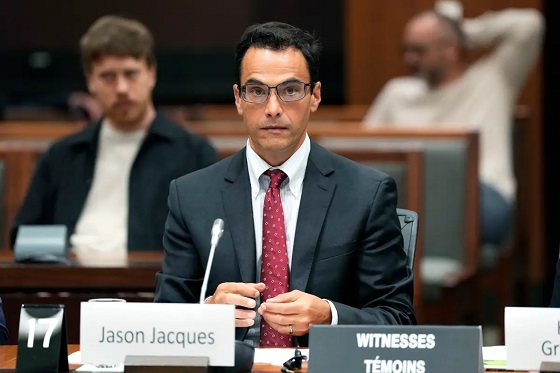
 Business2 days ago
Business2 days agoMark Carney Seeks to Replace Fiscal Watchdog with Loyal Lapdog
-
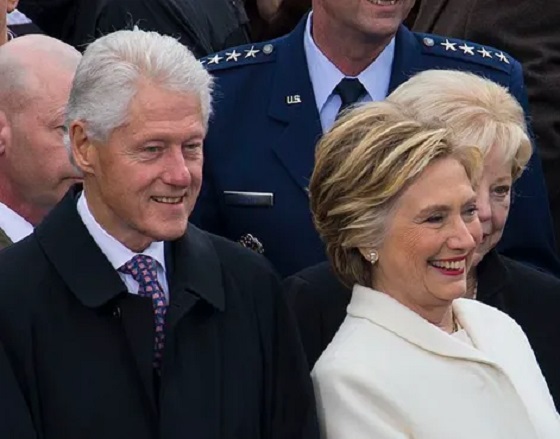
 International1 day ago
International1 day agoBondi and Patel deliver explosive “Clinton Corruption Files” to Congress
-

 International1 day ago
International1 day agoUS announces Operation Southern Spear, targeting narco-terrorists
-
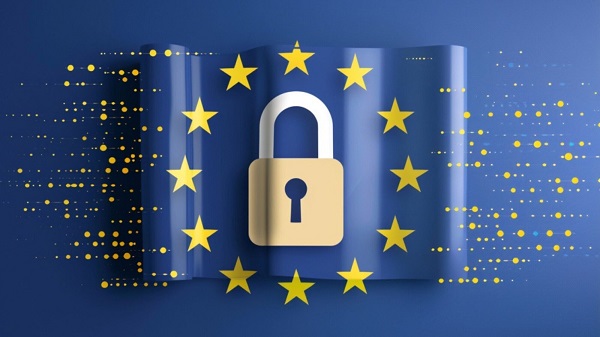
 Censorship Industrial Complex1 day ago
Censorship Industrial Complex1 day agoEU’s “Democracy Shield” Centralizes Control Over Online Speech
-

 Business2 days ago
Business2 days agoP.E.I. Moves to Open IRAC Files, Forcing Land Regulator to Publish Reports After The Bureau’s Investigation
-
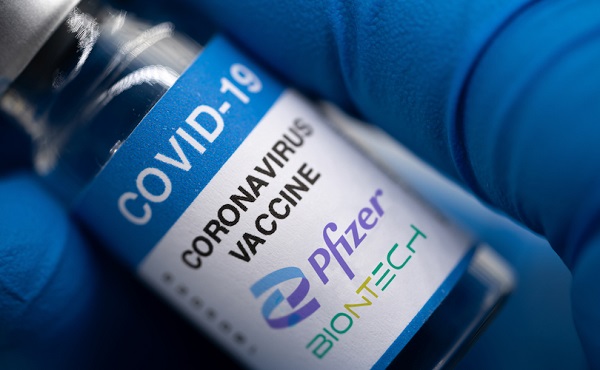
 COVID-191 day ago
COVID-191 day agoMajor new studies link COVID shots to kidney disease, respiratory problems








